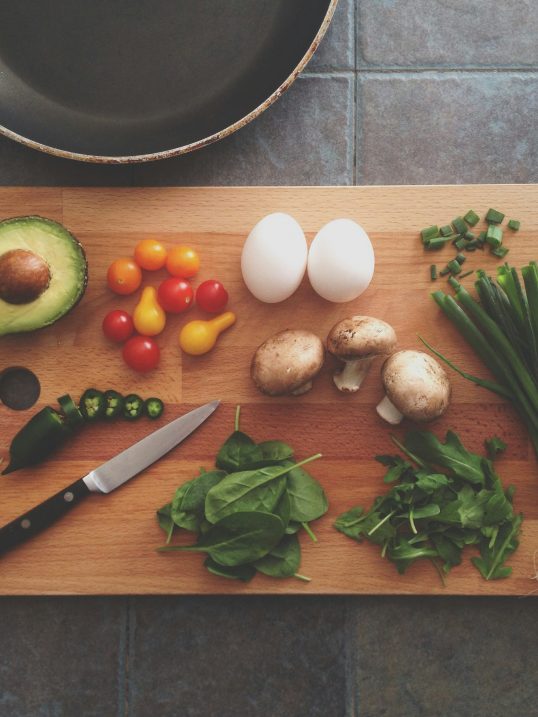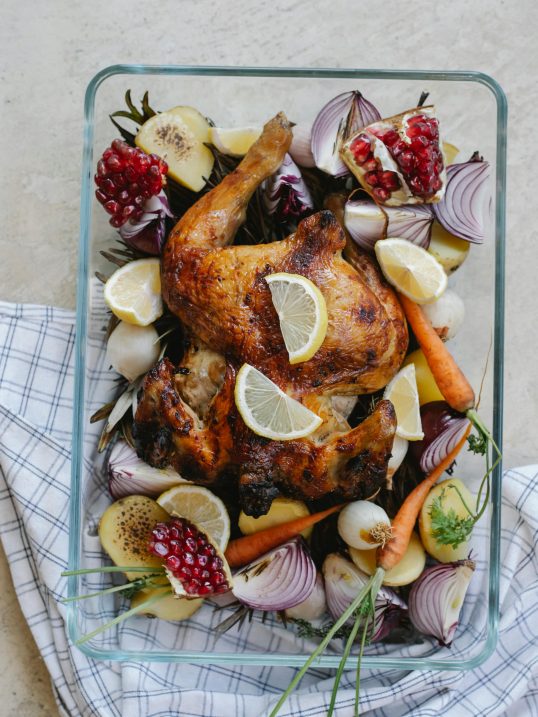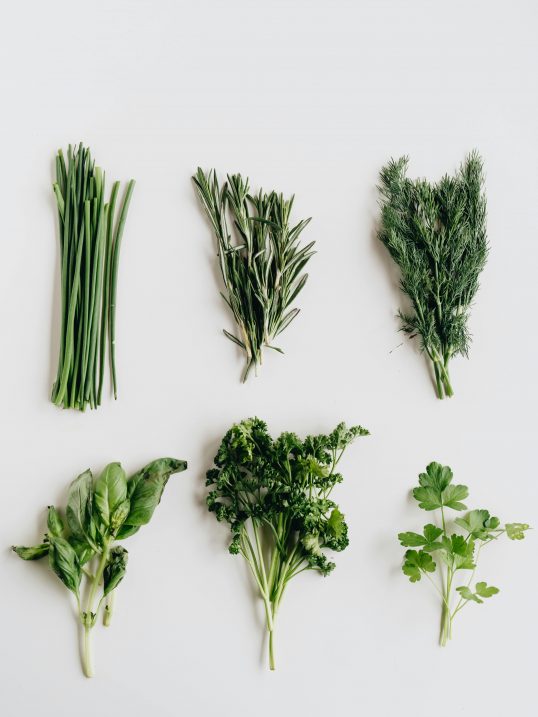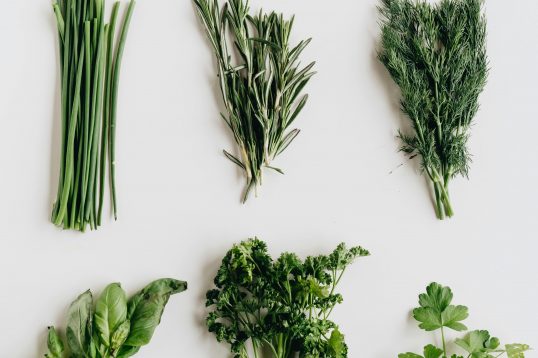If you are new to cooking and looking to stock up your kitchen with basic cookware, you might wonder where to start. Surely a skillet, a saucepan, and a larger stock pot would do for starters?
You head to the nearest Walmart or Costco aiming to make a quick stop at the cookware section and pick up one of each type, but your heart freezes when you see the sheer variety available of every type of cookware.
Sound familiar? We’ve been there, too. This is why we want to make it easier for you to start your culinary journey by laying out the differences between two popular cookware materials: cast iron and stainless steel.
By the end of this article, you will know the main differences between the two when it comes to cooking, cleaning, and durability and understand the pros and cons of using cast iron vs. stainless steel. Let’s get to it.
What Are the Main Differences Between Cast Iron vs Stainless Steel?
Cast iron and stainless steel are both alloys of iron but differ significantly in their composition, material properties, and cooking performance.
Cast iron is made with high carbon content, making it durable and excellent at retaining heat, but it is brittle and prone to rust. It excels in cooking methods that benefit from consistent, high heat, like searing and frying.
Stainless steel, on the other hand, contains chromium and nickel, offering superior corrosion resistance and easier cleaning, but is less effective at retaining heat.
It heats up quickly and is ideal for cooking delicate foods or dishes that require precise temperature control. Both materials are durable and can last a lifetime with proper care, though cast iron requires more maintenance, including seasoning and avoiding drastic temperature changes.
Below, we go into even more detail on the differences between cast iron and stainless steel.
Composition
Cast iron contains a high percentage of carbon (between 2-4%) and silicon, whereas stainless steel contains varying percentages of chromium (at least 10%) and nickel.
Material Characteristics
The addition of carbon makes cast iron hard and brittle at once. This means cast iron is resistant to high pressure but prone to cracking and chipping. Cast iron cookware generally has thick walls to enable them to withstand this.
Cast iron also rusts easily. Most cast iron pots and pans available in the market are pre-seasoned with oil or enameled with a thin coating of powdered glass to prevent rust. This also lends non-stick properties to the cookware.
On the other hand, the presence of chromium and nickel makes stainless steel naturally resistant to corrosion. However, steel utensils can get notoriously sticky, especially when sauteing vegetables or searing meat. That’s not necessarily a bad thing, as we will explain later.
Build
Cast iron cookware, such as skillets and Dutch ovens, is molded from a solid mass of cast iron by melting and pouring into sand molds. Due to this casting technique, the quality of cookware is largely uniform across manufacturers. What’s more, to counter their inherent brittleness, these cookware are built thicker and as a result, weigh more.
Stainless steel cookware typically contains several layers of materials fused together, a process called cladding. This is done because steel, by itself, is not a good conductor of heat.
Inserting a layer of thermally conductive copper or aluminum between layers of steel and fusing them makes cookware conduct heat well. However, it must be said that the quality of steel cookware largely depends on the grade of the steel used.
If you were to compare 12-inch pans made of cast iron and clad steel, the cast iron one would be nearly twice as heavy as the steel one. While this makes handling cast iron cookware somewhat of a workout, the benefits (which we’ll come to in a bit), more than make up for it.
Temperature Resistance
Cast iron can safely be heated up to 1500˚F, which makes it suitable for high-temperature uses, such as campfire cooking and barbecues that often don’t go beyond 650˚F. With seasoned or enameled cookware, you do not want to go over 800˚F lest you burn off the seasoning or degrade the enamel.
Stainless steel cookware is generally safe to use up to 600˚F, although the safety zone varies depending on the build of the utensil. It is always advisable to stick to the manufacturer’s guidelines on this.
Thermal Conductivity
Cast iron conducts heat much better than plain stainless steel. However, clad stainless steel, used in cookware, is a better heat conductor than cast iron. What does this mean for cooking? Steel cookware heats up faster than cast iron ones.
Heat Retention
Cast iron has a higher volumetric heat capacity compared to stainless steel. Simply put, this means a cast iron pan stores more heat than a steel one. Combined with its heavier weight, this makes cast iron a beast at staying hot longer.
Cleaning
Cast iron cookware requires hand-washing with a sponge and hot water to avoid damaging the seasoning. Gentle soap can be used, but harsh scrubbers, dishwashers, and strong detergents should be avoided.
Stainless steel is easier to clean and can be placed in a dishwasher or scrubbed with detergent and a scouring pad. However, removing stuck or burnt food may require soaking and extra effort. For tougher messes, soaking the utensil with hot water and a vinegar-baking soda mixture can simplify cleanup.
Cast iron
Pre-seasoned cast-iron must always be hand-washed using a kitchen sponge and hot water (no harsh scourers, dishwashers, or detergents here; though gentle soap is okay) to prevent the seasoning from getting scraped off. The same applies to enameled cast iron, although it is technically built to withstand dishwasher cycles.
After cleaning, it is important to wipe down the cookware and apply a coating of oil all over. Another good practice to follow occasionally is to heat the dish and rub in a small quantity of oil. Allow it to smoke a bit before turning off the heat.
Stainless steel
By comparison, it is easier to clean stainless steel utensils vs cast iron. Place the utensil in a dishwasher or use a scouring pad and some detergent for a thorough cleaning. However, removing any stuck bits of food might take some time and a bit of elbow grease.
Quick Tip:
To remove burnt or stuck food from stainless steel utensils, pour hot water into the dish, followed by a 1:1 mixture of vinegar and baking soda, and let it sit for a few minutes. When you scrub it later, the leftovers will come off quite easily.
Cooking
Cast iron excels at maintaining steady heat, making it perfect for searing, stewing, and baking. However, it’s less suited for cooking acidic dishes or foods with lingering smells like fish.
Stainless steel, on the other hand, works well for various cooking methods, including making sauces. While cast iron offers natural non-stick properties, stainless steel allows for creating flavorful fond during cooking.
Cast iron
Although a cast iron pot takes longer to heat up to a desired temperature (owing to its lower thermal conductivity and high heat capacity), it is excellent at maintaining a steady temperature and staying hot, even after it’s taken off the heat.
This makes cast iron the perfect cookware material to get that nice sear on a choice steak. It also makes sense to cook a stew or soup in a cast iron pot when you have guests over and want to keep food warm.
Cast iron cookware is ideal for stewing, braising, frying, searing, boiling, and even baking various dishes including meats, vegetables, pasta, lasagna, casseroles, slow-cooked recipes, bread, and much more. You can easily fry eggs in pre-seasoned and enameled pans due to their non-stick nature.
However, it’s not a good idea to fry fish in cast iron pans, as the gentler cleaning methods often cause the smell to linger on and possibly rub off onto the next dish you prepare.
Sauces containing tomatoes, wine, and other acidic ingredients mustn’t be cooked in pre-seasoned cast iron pots because the acid in them can react with the seasoning and strip it off. This doesn’t apply to enameled cast iron.
The ideal way to prep cast iron cookware is to baste the inside of the dish with fats or liquids and heat it on a medium flame. You can move on to the next steps once it gets sufficiently hot.
Stainless steel
Pots and pans made of good-quality, fully-clad stainless steel (yes, there are cheaper versions that use low-grade stainless steel and lesser layers of conductive material) are well-suited for several cooking methods, including braising, stewing, grilling, frying, and searing.
Although steel is a poor heat conductor, fully clad steel with layers of copper or aluminum sandwiched in between more than makes up for it. As a result, steel cookware heats up fast but is prone to temperature fluctuations when frying or adding stock or other ingredients.
Steel cooking utensils also cool relatively quickly when taken off the heat.
While cast iron is relatively non-stick (thanks to the seasoning or enameling), stainless steel can get sticky really quickly; more so if you use less oil. However, this also builds up fond, which adds incredible flavor to a dish when deglazed. You’ll get less of this in a cast iron pan.
With stainless steel, you can simmer tomato-based and wine-reduction sauces without worrying about any corrosive reaction.
Durability
Cast iron cookware is durable and long-lasting but requires careful handling to avoid thermal shock, rust, and damage. Regular seasoning and gradual cooling are key to maintaining its longevity.
Stainless steel is easier to care for, resists most damage, and offers excellent performance, though gradual heating and proper salt use can prevent minor issues like warping or corrosion.
Cast iron
Dutch ovens from brands like Le Creuset, the original manufacturer of enameled cookware, are a lifetime investment and are often handed down as heirlooms. However, you can easily find good quality pieces at camping stores or e-commerce sites that don’t cost as much.
There are a few recommended practices to ensure the durability of cast iron cookware. Top among these is to avoid drastic temperature changes, such as placing a cast iron pot inside a preheated oven or cranking up the hob to high heat to save time. This is because cast iron can crack or chip when exposed to thermal shock. For the same reason, always allow hot cookware to cool down naturally to ambient temperature and resist the urge to dunk it in cold water.
If your cookware is brand new, it is advisable to season it each time after use until a glossy patina develops from all the searing and frying it is exposed to. Steer clear of abrasive cleaners and dishwashers. You must also avoid soaking cast iron cookware in water for long. To remove stuck food, you can boil water for a couple of minutes in the dish and scrub it lightly once cooled.
It is also not a good idea to refrigerate leftovers in cast iron cookware, as moisture and condensation could cause the formation of rust on the lip of the cookware and its lid, which do not have the benefits of enameling or seasoning.
Stainless steel
High-grade stainless steel, used by brands such as Made In, offers excellent durability, performance, and ease of maintenance. Best practices dictate letting steel cookware heat up and cool down gradually to avoid hot spots and warping, and adding salt to water once it is sufficiently hot (for instance, when cooking pasta) to avoid salt settling at the bottom and corroding the metal.
Other than these few exceptions, it is unlikely you can damage your steel cookware. We’re not talking about scratches or discoloration that can happen from using abrasive cleaners or excessive heat.
Advantages and Disadvantages of Cast Iron vs Stainless Steel
While it can be overwhelming to choose between cast iron or stainless steel, the reality is that there are advantages and disadvantages of using each one.
| Category | Cast Iron | Stainless Steel |
| Advantages | – Stays hot longer, essential for searing, frying, and entertaining | – Heats up quickly and evenly |
| – Uniform quality across brands due to casting technique | – Dishwasher and detergent-safe; minimal maintenance required | |
| – Suitable for high-temperature cooking (baking, grilling, campfire) and low-temperature, long-time cooking | – Rust-resistant; can be refrigerated | |
| – Can go from stovetop to preheated ovens to finish cooking | – Some types can go from stovetop to oven | |
| – Enameled versions can handle acidic foods | – Can handle all types of food, including tomato and wine-reduction sauces | |
| – Less prone to temperature fluctuations | – Weighs less and is easier to handle | |
| – Better non-stick properties | – Just as durable and long-lasting as cast iron | |
| – Highly durable and can last a lifetime with proper care | ||
| Disadvantages | – Cannot be used in a dishwasher or with abrasive cleaners; requires more TLC in hand washing | – Is not non-stick by nature; can take time to clean up stuck food |
| – Takes time to heat up | – Quality varies by brand and grade of steel used | |
| – Seasoned cookware unsuitable for acidic foods | – Doesn’t maintain temperature well; can create hot spots or lose heat faster | |
| – Prone to chipping and cracking due to thermal shock | – Prone to warping due to thermal shock | |
| – Not suitable for storing in a refrigerator | – Not suitable for high-temperature outdoor cooking | |
| – Usually heavy and harder to move |
Which Is Better, Cast Iron or Stainless Steel?
Cast iron cookware are versatile and durable pieces that handle a variety of temperatures and cooking techniques, yet you need time and patience to maintain it over the long run.
For a juicy slab of meat, cast iron does the trick pretty well, searing the outside to perfection, while keeping the inside juicy and medium-rare. So, if you love your steak, it makes perfect sense to invest in cast iron cookware. Ditto for dishes that transition from the stovetop to the oven.
That said, you can never go wrong with sturdy stainless steel cookware that’s made from high-grade steel and fully clad. It doesn’t require much maintenance and after-care, although good-quality steelware can cost you a pretty penny. Recipes that involve frying meat, followed by simmering sauces in the same pot, turn out great in steel cookware, thanks to all that delicious fond.
To start with, we recommend getting a cast iron skillet for steaks and a steel stockpot for gravy-based dishes. Once you’ve got a hang of maintaining cast iron cookware, you might want to invest in a Dutch oven.
Insider’s Insight
Cast iron and stainless steel are both durable materials used in cookware. Cast iron is great at keeping temperatures stable, goes from indoor to outdoor cooking without breaking a sweat, and is generally non-stick. It also goes easily from the kitchen to the table, owing to its rustic charm and in some cases, bright colors. On the other hand, it requires care in washing and maintaining the seasoning and takes time to heat up. If you compare cookware of the same size, the cast iron one will usually be twice as heavy as the steelware.
Stainless steel is less demanding, heats up quickly, and handles most dishes with ease. It also goes easily from the stove to the refrigerator, once cooled. It cannot, however, be used outdoors or at extreme temperatures and does not offer the same non-stick properties as enameled or seasoned cast iron.
Both stainless steel and cast iron cookware have their strengths and can find a permanent home in your kitchen. If you’re just beginning your culinary journey, it’s best to start with a medium-sized cast iron skillet and a stainless steel stockpot to handle everything from frying and searing to stewing and braising.






